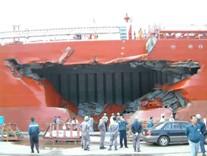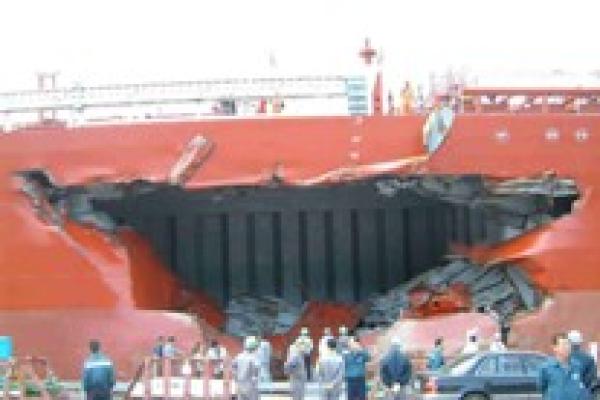
Steamship Mutual
Published: May 01, 2008

The recent decision Court of Appeal in the in the “Front Ace” touched on three distinct areas of law, namely (i) causation, (ii) damages for loss of a fixture and (iii) when “Loss of Chance” principles ought to apply.
The facts of the case can be stated briefly as follows. The “Vicky 1” collided with the “Front Ace” on 12 December 2002 as she approached for lightering. Liability was promptly admitted and the matter was referred to the Admiralty Registrar to determine quantum. The physical repair costs amounted to only US$80,000 and yet the owners of the “Front Ace” made a claim for financial losses ranging from US$1.9 million to US$2.6 million because the day before the collision the “Front Ace” had been fixed to Chevron and that fixture was lost as a result of the collision; the vessel was unable to repair in time to meet the laycan and Chevron understandably cancelled on a falling market. The “Front Ace” then found herself without employment and had little option but to fix to Vitol for a 60-day replacement fixture at a significantly lower time charter equivalent daily rate. The striking feature of this case was that en route to the repair yard the Master turned around and doubled back for a period of 6 hours before resuming his voyage towards the shipyard. This extended the total voyage time to the yard by some 12 hours and the defendant argued that it broke the chain of causation. In his judgment, the Admiralty Registrar described that manoeuvre as an odd way of achieving a reasonable result, namely arriving at the yard on the day booked for repairs. The Court of Appeal upheld that finding and pointed out that the Karimun yard had been booked for repairs to commence on 23 December 2003 and that that booking had been made some two days before the manoeuvre complained of took place. The timing of that booking was reasonable and thus, they said, it was not unreasonable for the Master to navigate his vessel to arrive at the yard at the time so booked. The Court of Appeal affirmed the test set out by Lord Wright in "The Oropesa": “To break the chain of causation it must be shown that there is something which I will call ultroneus, something unwarrantable, a new cause which disturbs the sequence of events, something which can be described as either unreasonable or extraneous or extrinsic.” but held that “in terms of quality and character of conduct [the master’s actions] could be categorised as nothing more than an odd way of achieving a reasonable result.” The Court then considered damages for loss of the Chevron fixture. The battleground here concerned whether the loss ought to be calculated up to the date that the Chevron fixture would have completed, or whether it should also cover the period through to the conclusion of the Vitol fixture entered into in mitigation. Since the market recovered shortly after the Vitol fixture was entered into, the claimants argued that they ought to be compensated for their loss not just by reference to the differential between the time charter equivalent daily rate of the Chevron and the Vitol fixture, but also in respect of the differential in daily earnings they would, but for the collision, have earned in the period thereafter up to the date the Vitol fixture completed. At trial, the experts agreed that the claimants would only be compensated properly if their loss was calculated by reference to the date the Vitol fixture ended. The Court of Appeal held there was no reason for them not to accept that finding or disallow a calculation of loss made up to that date. They thus rejected the argument that they were bound to follow the methodology approved by the House of Lords in “The Argentino” or that they were bound to restrict the claim for damages to losses arising up to the end of the Chevron fixture. That decision did not, they held, erode the underlying principle of restitutio integrum. The final point before the Court of Appeal was whether the Admiralty Registrar was right to reduce the damages awarded for loss of the fixture by 20% on “loss of a chance” principles. In making this deduction, the Admiralty Registrar had cited Allied Maples but the Court of Appeal held that this was not a case in which, as Stuart-Smith LJ put it: “… the plaintiff’s loss depends on the hypothetical action of a third party, either in addition to action by the plaintiff, as in this case, or independently of it.” The Court of Appeal pointed out that the Registrar had found that the vessel would have been engaged profitably during the relevant period and both experts had agreed the amount of that loss. Having made those findings, the Court of Appeal held there was no room for a deduction based on loss of chance, because that only came into play in cases where there was a chance the vessel might not have been employed profitably. The only question that arose in this case was how much profit the vessel would have earned during the period in question and not whether she would have earned at all. Accordingly, the claimants’ appeal was allowed and damages for loss of the Chevron fixture were increased to US$2,360,495.49.
With thanks to Darryl Kennard of Thomas Cooper for preparing this article


